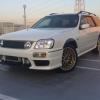Rb25 Into R32 - Basic Guide
Announcements
-
Similar Content
-
Latest Posts
-
Well, this is probably where a wiring diagram and a multimeter come into play.
-
I can say to anyone thats doing this; having done a number of R clusters; just be careful if its an unknown cluster. It takes a bit of force to pull up; but if it feels excessive then its probably stuck. I've had this and pulled the entire hair spring out; and I can tell you; its not easy getting the correct spring replacement with the correct inner diameter and winding. In my case someone had used some sort of adhesive to stick it to the spindle and it pulled the whole spindle out; which the force seperated the hairspring from the spindal and caused it to deform. You may have to clean it (IPA); or in my case if i'd known i should have used some sort of solvent on it. Also check out Cruizin Central on eBay. He does all sorts of dials; and you can email him with any custom designs you want. So if you want like certain logos etc...he'll send you a mock of what it will look like then you accept the order and he'll take care of the rest. Fantastic dials and he can do basically any design you want.
-
Have you confirmed its the actual axles? Also the wheel bearings that mount on the hubs to hold the axles wear out. I replaced mine as they got play in them. It sorted my play issue.
-
Ive converted a few clusters for the R33 with 320km/h dials. On the back there are some pads which can be bridged or unbridged (using solder or wick braid) to calibrate it. There is one bridge which is for MPH <> KPH; and there are combinations of bridges to offset it. There is probably a diagram For example; this is my conversion for a 180km/h dial to a 320km/h dial (I put custom GT-R dials on it with the GTS25t layout) If you have J2 soldered (assuming the S clusters have a similar config to the R clusters); you may need to remove that solder
-
Back on topic 😉, these are some of the notable pages from the booklets that are supplied with each weekly parts update. I never knew the BNR32 test mule car had an S13 Silvia front end... *Edit: On closer inspection the test car still had the R32 body, but only the front end had Silvia panels etc.
-







Recommended Posts
Create an account or sign in to comment
You need to be a member in order to leave a comment
Create an account
Sign up for a new account in our community. It's easy!
Register a new accountSign in
Already have an account? Sign in here.
Sign In Now